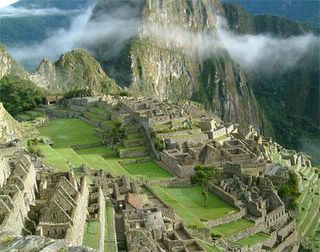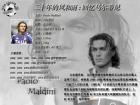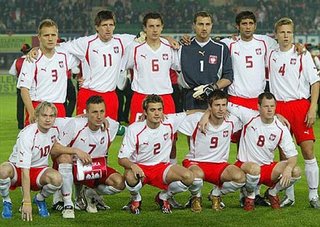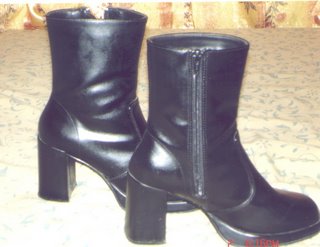 What's the world's sunniest city? It's Cusco, Peru--if you measure by UV rays. So says a team of New Zealand scientists who've been basking in UV data soaked up by NASA's Total Ozone Mapping Spectrometer.It's a fitting find, given the city's history. Today, Cusco is a Peruvian city of 300,000. But five centuries ago, it was the capital of the Inca Empire, and the Incas worshipped the sun. How did the sun-worshipping Inca Empire rise and fall? Intro to the IncasThink "Inca" and you likely think "ancient." But the "ancient Inca" weren't all that far back. The first Inca rulers emerged in Cusco during Europe's Middle Ages. And their empire didn't really get rolling until the early 15th century--just 100 years before the Spanish arrived in South America.In the course of those 100 years, the Incas built an empire that stretched all the way from Ecuador to central Chile--about as long as the stretch between New York and Panama. Yet their empire collapsed as quickly as it was built.Sons of the SunThe origins of the Inca--who had no writing system--are shrouded in myth. According to one, the first Inca emperor, Manco Capac, arose from a hole in the ground, married his sister, and established himself and his clan around Cusco. According to another, the sun god Inti ordered Manco Capac and his sister/wife to rise up from the depths of Lake Titicaca, on the Peru-Bolivia border.In any case, Inca kings traced their lineage back to Manco Capac--and through him to the sun god--and sought to extend their influence beyond Cusco. At first, they simply raided and plundered neighboring kingdoms. Later, they began garrisoning troops in strategic spots and appointing Inca officials to administer "foreign" lands. But none of these were more than a few dozen miles from home.Sons' Rise
What's the world's sunniest city? It's Cusco, Peru--if you measure by UV rays. So says a team of New Zealand scientists who've been basking in UV data soaked up by NASA's Total Ozone Mapping Spectrometer.It's a fitting find, given the city's history. Today, Cusco is a Peruvian city of 300,000. But five centuries ago, it was the capital of the Inca Empire, and the Incas worshipped the sun. How did the sun-worshipping Inca Empire rise and fall? Intro to the IncasThink "Inca" and you likely think "ancient." But the "ancient Inca" weren't all that far back. The first Inca rulers emerged in Cusco during Europe's Middle Ages. And their empire didn't really get rolling until the early 15th century--just 100 years before the Spanish arrived in South America.In the course of those 100 years, the Incas built an empire that stretched all the way from Ecuador to central Chile--about as long as the stretch between New York and Panama. Yet their empire collapsed as quickly as it was built.Sons of the SunThe origins of the Inca--who had no writing system--are shrouded in myth. According to one, the first Inca emperor, Manco Capac, arose from a hole in the ground, married his sister, and established himself and his clan around Cusco. According to another, the sun god Inti ordered Manco Capac and his sister/wife to rise up from the depths of Lake Titicaca, on the Peru-Bolivia border.In any case, Inca kings traced their lineage back to Manco Capac--and through him to the sun god--and sought to extend their influence beyond Cusco. At first, they simply raided and plundered neighboring kingdoms. Later, they began garrisoning troops in strategic spots and appointing Inca officials to administer "foreign" lands. But none of these were more than a few dozen miles from home.Sons' RiseAround 1438, a new Inca king--Pachacuti Inca Yupanqui--began a rapid imperial expansion. Using military might and diplomatic skill, Pachacuti (meaning "world-shaker") brought much of the Andes mountain range under Inca control. He conquered some rivals, bought fealty from others, and convinced many that resistance was futile. Recalcitrants faced forced resettlement.
Pachacuti's son, Topa Inca Yupanqui, followed in his father's footsteps, conquering new lands in Bolivia and Chile. He also developed a classification system for administering the Inca Empire. Basically, the adult male population was divided into various groups, ranging in size from 100 to 10,000. The groups were then used to divvy up labor and military service.
The Inca didn't demand tribute payments, but they did exact a labor tax known as "mit'a." Under the system, a portion of the peasantry's energies went to public works--from farming, to soldiering, to building and maintaining the system of roads, bridges, and storehouses that connected the empire.
Sons' TwilightTopa's successor, Huayna Capac, took over around 1493 and kept the empire rolling after the Spanish arrived in South America. Huayna never met the Spanish, but he likely died from one of their diseases. Around 1525, an epidemic struck Cusco--probably either smallpox or measles, relayed from the Spanish by raiders attacking Inca settlements. Huayana and his heir both succumbed.That led to a succession struggle between two of the emperor's remaining sons: Atahuallpa and Huascar. Atahuallpa's forces captured Huascar, but not before civil war and disease had weakened the empire. Fresh from his victory, Atahuallpa accepted an invite from Francisco Pizarro--newly arrived in Peru with about 180 Spaniards--to attend a feast in his honor. It was an ambush. They kidnapped the Inca emperor and refused to release him even after he raised a massive ransom--24 tons of gold and silver.When Atahuallpa's supporters killed Huascar, the Spanish used it as an excuse to kill Atahuallpa. The Inca, who at first saw Pizarro as a possible incarnation of one of their gods, soon recognized the Spanish as a threat to the empire. In 1535, a new emperor, Manco Inca, attacked. But the Spanish prevailed, and Manco retreated to a mountainous region outside Cusco. There he established a small Inca state that survived until 1572. Today, 10 million South Americans still speak the Inca language and follow Inca customs.Used with permission
(c) 2006 Every Learner, Inc. All rights reserved.
http://KnowledgeNews.net
Steve SampsonMay 26, 2006 





















































